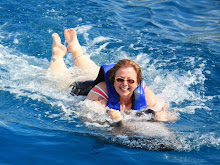Mid term this week. A 100 question multiple choice quiz and an "egg" quiz. On the Egg quiz we must name all five parts of the egg correctly, then give the proper weights for the yolk and whites, and define egg grades. This is a piece of cake and we are allowed to leave when we are finished.
Week 6 Vocabulary
Concepts & Theories of Culinary Techniques Vocabulary Assignment Week 6
A Point – a cooking term that refers to medium rare.
Butcher’s Yield – a system for figuring food costs.
Carry-over Cooking – the term that refers to the cooking that takes place after an item has been removed from the heat.
Carving – to cut meat into portions.
Connective Tissue – the tissues that hold the muscles and other tissue together.
Convection – cooking by hot air circulating around the food.
Cryovac – vacuum packaging.
Fabricated Cuts – single portion cuts from less that optimal meat.
Green Meat – meat that is freshly slaughtered. Has not been aged.
Marbling – the mixture of meat and fat.
Medium – warm pink center.
Medium Rare – warm red center, pinkish outside.
Medium Well – mostly brown meat with a very little pink.
Portioned Controlled Cuts – measured cuts of meat that are cut to a specific weight.
Primal Cuts – the first cutting up of a new carcass.
Rack – section of the ribs from beef or lamb, or pork.
Roasted – meat that has been cooked in a dry heat oven.
Roasting – cooking meat with a dry heat.
Rotisseur – the person that is responsible for the roasting or grilling of meats.
Scallopini – cutlets that have been pounded to be thin and all the same thickness, such as veal or chicken.
Shish Kebob – chunks of meat on a skewer and grilled or roasted.
Silverskin – the tough connective tissue around muscle.
Slicer – a machine used for cutting.
Tenting – to put foil over food to keep the heat in.
Tournedos – a thick steak from a beef tenderloin.
Well Done – meat cooked to brown with no sign of pink. (Also known as a crime against meat everywhere!)
Wednesday/Thursday Class - Fundamentals of Classical Technique
WEDNESDAY NIGHT
This week, STARCHES! This will be part of the "No Carb Left Behind" Experiement. While we were cooking Chef called us out one by one to discuss our mid-term grades. I received a 91. That was the second highest in the class. I missed being the highest by one point. The person that finished above me had help from her foster brother who happens to be our TA. I consider that cheating but I will still take my A and be proud of it. Chef tells me that he knows I am a good cook, he thinks I just need a little refinement. I can't say I disagree.
Tonight we are cooking potatoes. Baked, Croquettes, Gratin Dauphinaise, Duchesse, and Lyonaise.
 |
| Baked Potatoes |
 |
| Potato Croquettes |
 |
| Duchesse Potatoes |
 |
| Potatoes Lyonaise |
 |
| Gratin Dauphinaise |
THURSDAY NIGHT
Tonight there are only two of us on my team. We are responsible for making four of the six dishes we are cooking tonight. The one teammate that is here with me is VERY slow. She makes the Rice Pilaf and the Fettucini Carbonara. I make Risotto, Polenta, Spaetzle and Potato Gnocchi. Chef deems my Risotto and Polenta to be the best in the class!
 |
| Spaetzle |
 |
| Carbonara |
 |
| Gnocchi |
 |
| Risotto |
 |
| Polenta |
That's it for this week. Next week we get to make REAL food!
Until next week,
Ciao!





















